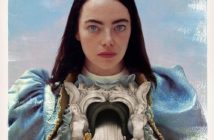Tabitha L. Andrews ’23
Staff Writer
At Lake Forest College, the Department of Art and Art History put together a distinguished selection of works displayed in the galleries at Durand Hall. Many of these pieces have been created over multiple years and redefine the parameters of art. The impact of the human experience, taking ideas from history, personal accounts, politics, and society to analyze and interpret artistically, are exponential in these works.
Two of the pieces described below were created by professors here at Lake Forest College: David Sanchez Burr and Tracy Marie Taylor. These two artists created exquisitely different forms of expression, both using technology and sound. I interviewed Sanchez Burr on his work and listened to a speech given by Taylor, who focused on the importance of her art.
Sanchez Burr, an assistant professor of art, specializes in three-dimensional art and video and sound electronics within mixed media. “White Sands” is a focused combination of the environment of White Sands, a Trinity nuclear testing site from the 1940s located in New Mexico, and the individual experiences of a historical moment. In an interview with Sanchez Burr, he explained a lot of components that went into creating the work.
“My artwork tends to deal with social issues and issues of my generation, and one of these big things that I grew up with was the Cold War. I grew up in Madrid, Spain, and when I moved to the United States, we were still having drills, getting under our desks, and covering our heads, and there was the threat of Nuclear War on our minds,” Sanchez Burr said. “I wanted to turn back internally to things of my own experiences. Most of my artwork recently has been about the outside. This artwork is… personal to me, whereas other artworks I have done have been devoted to audiences.”
When asked how he designs his work, Sanchez Burr shared his insight.
“A lot of the aesthetic decisions and choices to use amplifier equipment are owed to my life as a musician. The design contains three sound modules, each symbolizing the history of White Sands. All three combined represent the white noise of the explosion and the malolactic experience of the rivers and patterns of the desert and nature.”
Sanchez Bur hopes viewers take away something from the work. He is inspired to create similar pieces in the future.
“I feel very compelled to create more work like this now. I have been looking for a new direction in how I want to make artwork. It is a work of art that is also static, so this is a more reflective piece that people can enjoy from many different perspectives.”
Taylor, associate professor of art and chair of art and art history at Lake Forest College, specializes in design courses and digital art. Taylor created a personal representation of what it is to be a mother. She had three parts to her exhibit, one of which discusses the whole of her breastfeeding experience.
Becoming a mother changed everything in her life and dramatically affected her artwork. Taylor went from creating works on topics such as “massacres to motherhood.”
She made her focal piece, a quilt titled “While I Was Away,” while inspired by her inability to breastfeed her son. Shortly after giving birth, she found her son had been rejecting her milk and starving. Taylor did not find comfort in giving him formula and decided to pump her milk instead. She began “pumping around the clock” in which she spent 572 hours “tethered to a breast pump.”
Taylor tracked her breast pumping on an app and decided she wanted to create something from this extenuating experience. Men were her primary audience, demonstrating to them the intense labor that defines motherhood. Taylor, an avid feminist, wanted to highlight how difficult it is for women to walk the line of motherhood while also trying to provide economically for their children.
She used computer programming to create a map of her breastfeeding. The quilt’s center and edges respectively represent midnight and 11:59 p.m. The rays and coloring represent each day she breastfed and “the view of the sky from outside my window.” The strands coming from the quilt are the individual pumping times, initially eight to 10 a day, and eventually less as time went on.
The amount of milk she produced represents the inches of the beads. The sculpture pictured on the floor below connects to the quilt through these beads. The sculpture, “The Shape of Your Sounds,” is a visual representation of her son’s cries. It connects the mother and child and symbolizes her memory of “not being able to comfort my son because I was constantly hooked up to a breast pump.” Her other two pieces incorporate this idea of women and motherhood throughout history.
Taylor is currently working on a project to create art for other women and to highlight their own breastfeeding experiences.




